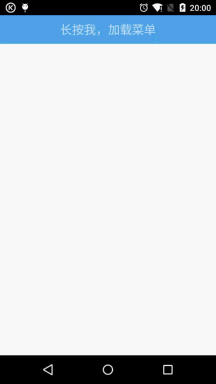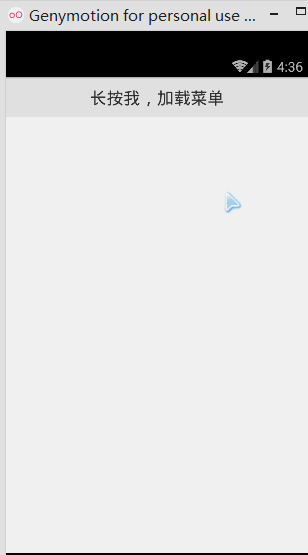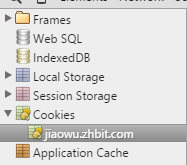# 7.1.3 Android HTTP请求方式:HttpURLConnection
## 本节引言:
> 前面两节我们学习的都是一些概念性的东西,Http的协议以及协议头的一些东东,而本节我们 就要堆码了,而本节学习的是Android为我们提供的Http请求方式之一:HttpURLConnection, 除了这种,还有一种还有一种HttpClient,后者我们会下一节讲!不过前者一旦请求复杂起来,使用起来 非常麻烦,而后者我们Java抓包也经常会用到,是Apache的,毕竟不是谷歌亲儿子,而在4.4版本 HttpURLConnection已被替换成OkHttp了!好吧,与时俱进,决定讲完HttpClient也来会会这个 OkHttp!对了,一般我们实际开发并不会用HttpURLConnection和HttpClient,使用别人封装 好的第三方网络请求框架,诸如:Volley,android-async-http,loopj等,因为网络操作涉及到 异步以及多线程,自己动手撸的话,很麻烦,所以实际开发还是直接用第三方!!当然学习下也 无妨,毕竟第三方也是在这些基础上撸起来的,架构逼格高,各种优化!好的,话不多说,开始 本节内容!
## 1.HttpURLConnection的介绍
> 答:一种多用途、轻量极的HTTP客户端,使用它来进行HTTP操作可以适用于大多数的应用程序。 虽然HttpURLConnection的API提供的比较简单,但是同时这也使得我们可以更加容易地去使 用和扩展它。继承至URLConnection,抽象类,无法直接实例化对象。通过调用**openCollection**() 方法获得对象实例,默认是带gzip压缩的;
## 2.HttpURLConnection的使用步骤
使用HttpURLConnection的步骤如下:
> * 创建一个URL对象: **URL url = new URL(http://www.baidu.com);**
> * 调用URL对象的openConnection( )来获取HttpURLConnection对象实例: **HttpURLConnection conn = (HttpURLConnection) url.openConnection();**
> * 设置HTTP请求使用的方法:GET或者POST,或者其他请求方式比如:PUT **conn.setRequestMethod("GET");**
> * 设置连接超时,读取超时的毫秒数,以及服务器希望得到的一些消息头 **conn.setConnectTimeout(6*1000);** **conn.setReadTimeout(6 * 1000);**
> * 调用getInputStream()方法获得服务器返回的输入流,然后输入流进行读取了 **InputStream in = conn.getInputStream();**
> * 最后调用disconnect()方法将HTTP连接关掉 **conn.disconnect();**
**PS**:除了上面这些外,有时我们还可能需要对**响应码**进行判断,比如200: if(conn.getResponseCode() != 200)然后一些处理 还有,可能有时我们 并不需要传递什么参数,而是直接去访问一个页面,我们可以直接用: final InputStream in = new URL("url").openStream(); 然后直接读流,不过这个方法适合于直接访问页面的情况,底层实现其实也是 return openConnection().getInputStream(),而且我们还不能设置一些 请求头的东东,所以要不要这样写,你自己要掂量掂量!
## 3.HttpURLConnection使用示例
> 这里我们主要针对GET和POST请求写两个不同的使用示例,我们可以conn.getInputStream() 获取到的是一个流,所以我们需要写一个类将流转化为二进制数组!工具类如下:
**StreamTool.java**:
```
/**
* Created by Jay on 2015/9/7 0007.
*/ public class StreamTool { //从流中读取数据 public static byte[] read(InputStream inStream) throws Exception{ ByteArrayOutputStream outStream = new ByteArrayOutputStream(); byte[] buffer = new byte[1024]; int len = 0; while((len = inStream.read(buffer)) != -1) { outStream.write(buffer,0,len); } inStream.close(); return outStream.toByteArray(); } }
```
接下来就可以开始撸我们的示例了!
### 1)HttpURLConnection发送GET请求代码示例
**运行效果图**:

**核心部分代码**:
布局:**activity_main.xml**
```
<LinearLayout xmlns:android="http://schemas.android.com/apk/res/android" android:layout_width="match_parent" android:layout_height="match_parent" android:orientation="vertical"> <TextView android:id="@+id/txtMenu" android:layout_width="match_parent" android:layout_height="48dp" android:background="#4EA9E9" android:clickable="true" android:gravity="center" android:text="长按我,加载菜单" android:textSize="20sp" /> <ImageView android:id="@+id/imgPic" android:layout_width="match_parent" android:layout_height="match_parent" android:visibility="gone" /> <ScrollView android:id="@+id/scroll" android:layout_width="match_parent" android:layout_height="match_parent" android:visibility="gone"> <TextView android:id="@+id/txtshow" android:layout_width="wrap_content" android:layout_height="wrap_content" /> </ScrollView> <WebView android:id="@+id/webView" android:layout_width="match_parent" android:layout_height="match_parent" /> </LinearLayout>
```
获取数据类:**GetData.java**:
```
/**
* Created by Jay on 2015/9/7 0007.
*/ public class GetData { // 定义一个获取网络图片数据的方法: public static byte[] getImage(String path) throws Exception { URL url = new URL(path); HttpURLConnection conn = (HttpURLConnection) url.openConnection(); // 设置连接超时为5秒 conn.setConnectTimeout(5000); // 设置请求类型为Get类型 conn.setRequestMethod("GET"); // 判断请求Url是否成功 if (conn.getResponseCode() != 200) { throw new RuntimeException("请求url失败"); } InputStream inStream = conn.getInputStream(); byte[] bt = StreamTool.read(inStream); inStream.close(); return bt; } // 获取网页的html源代码 public static String getHtml(String path) throws Exception { URL url = new URL(path); HttpURLConnection conn = (HttpURLConnection) url.openConnection(); conn.setConnectTimeout(5000); conn.setRequestMethod("GET"); if (conn.getResponseCode() == 200) { InputStream in = conn.getInputStream(); byte[] data = StreamTool.read(in); String html = new String(data, "UTF-8"); return html; } return null; } }
```
**MainActivity.java**:
```
public class MainActivity extends AppCompatActivity { private TextView txtMenu, txtshow; private ImageView imgPic; private WebView webView; private ScrollView scroll; private Bitmap bitmap; private String detail = ""; private boolean flag = false; private final static String PIC_URL = "http://ww2.sinaimg.cn/large/7a8aed7bgw1evshgr5z3oj20hs0qo0vq.jpg"; private final static String HTML_URL = "http://www.baidu.com"; // 用于刷新界面 private Handler handler = new Handler() { public void handleMessage(android.os.Message msg) { switch (msg.what) { case 0x001: hideAllWidget(); imgPic.setVisibility(View.VISIBLE); imgPic.setImageBitmap(bitmap); Toast.makeText(MainActivity.this, "图片加载完毕", Toast.LENGTH_SHORT).show(); break; case 0x002: hideAllWidget(); scroll.setVisibility(View.VISIBLE); txtshow.setText(detail); Toast.makeText(MainActivity.this, "HTML代码加载完毕", Toast.LENGTH_SHORT).show(); break; case 0x003: hideAllWidget(); webView.setVisibility(View.VISIBLE); webView.loadDataWithBaseURL("", detail, "text/html", "UTF-8", ""); Toast.makeText(MainActivity.this, "网页加载完毕", Toast.LENGTH_SHORT).show(); break; default: break; } } ; }; @Override protected void onCreate(Bundle savedInstanceState) { super.onCreate(savedInstanceState); setContentView(R.layout.activity_main); setViews(); } private void setViews() { txtMenu = (TextView) findViewById(R.id.txtMenu); txtshow = (TextView) findViewById(R.id.txtshow); imgPic = (ImageView) findViewById(R.id.imgPic); webView = (WebView) findViewById(R.id.webView); scroll = (ScrollView) findViewById(R.id.scroll); registerForContextMenu(txtMenu); } // 定义一个隐藏所有控件的方法: private void hideAllWidget() { imgPic.setVisibility(View.GONE); scroll.setVisibility(View.GONE); webView.setVisibility(View.GONE); } @Override // 重写上下文菜单的创建方法 public void onCreateContextMenu(ContextMenu menu, View v, ContextMenu.ContextMenuInfo menuInfo) { MenuInflater inflator = new MenuInflater(this); inflator.inflate(R.menu.menus, menu); super.onCreateContextMenu(menu, v, menuInfo); } // 上下文菜单被点击是触发该方法 @Override public boolean onContextItemSelected(MenuItem item) { switch (item.getItemId()) { case R.id.one: new Thread() { public void run() { try { byte[] data = GetData.getImage(PIC_URL); bitmap = BitmapFactory.decodeByteArray(data, 0, data.length); } catch (Exception e) { e.printStackTrace(); } handler.sendEmptyMessage(0x001); } ; }.start(); break; case R.id.two: new Thread() { public void run() { try { detail = GetData.getHtml(HTML_URL); } catch (Exception e) { e.printStackTrace(); } handler.sendEmptyMessage(0x002); }; }.start(); break; case R.id.three: if (detail.equals("")) { Toast.makeText(MainActivity.this, "先请求HTML先嘛~", Toast.LENGTH_SHORT).show(); } else { handler.sendEmptyMessage(0x003); } break; } return true; } }
```
最后别忘了加上联网权限:
```
<uses-permission android:name="android.permission.INTERNET" />
```
**注意事项**:
> 用handler的原因就不用讲了吧~ 另外我们加载html代码的使用的是webView的loadDataWithBaseURL而非LoadData, 如果用LoadData又要去纠结中文乱码的问题,so…用loadDataWithBaseURL就可以不用纠结那么多了 另外有些页面可能需要我们提交一些参数,比如账号密码:我们只需把对应参数拼接到url尾部即可,比如: http://192.168.191.1:8080/ComentServer/LoginServlet?passwd=123&name=Jack 然后服务端getParamater("passwd")这样就可以获得相应的参数了,我们请求时这些东西都会看得清清楚楚 ,所以说GET方式并不安全!另外还有一点要注意的就是Android从4.0开始就不允许在非UI线程中进行UI操作!
### 2)HttpURLConnection发送POST请求代码示例
> 有GET自然有POST,我们通过openConnection获取到的HttpURLConnection默认是进行Get请求的, 所以我们使用POST提交数据,应提前设置好相关的参数:conn.setRequestMethod("POST"); 还有:conn.setDoOutput(true);conn.setDoInput(true);设置允许输入,输出 还有:conn.setUseCaches(false); POST方法不能缓存,要手动设置为false, 具体实现看代码:
**运行效果图**:

**核心代码**:
**PostUtils.java**
```
public class PostUtils { public static String LOGIN_URL = "http://172.16.2.54:8080/HttpTest/ServletForPost"; public static String LoginByPost(String number,String passwd) { String msg = ""; try{ HttpURLConnection conn = (HttpURLConnection) new URL(LOGIN_URL).openConnection(); //设置请求方式,请求超时信息 conn.setRequestMethod("POST"); conn.setReadTimeout(5000); conn.setConnectTimeout(5000); //设置运行输入,输出: conn.setDoOutput(true); conn.setDoInput(true); //Post方式不能缓存,需手动设置为false conn.setUseCaches(false); //我们请求的数据: String data = "passwd="+ URLEncoder.encode(passwd, "UTF-8")+ "&number="+ URLEncoder.encode(number, "UTF-8"); //这里可以写一些请求头的东东... //获取输出流 OutputStream out = conn.getOutputStream(); out.write(data.getBytes()); out.flush(); if (conn.getResponseCode() == 200) { // 获取响应的输入流对象 InputStream is = conn.getInputStream(); // 创建字节输出流对象 ByteArrayOutputStream message = new ByteArrayOutputStream(); // 定义读取的长度 int len = 0; // 定义缓冲区 byte buffer[] = new byte[1024]; // 按照缓冲区的大小,循环读取 while ((len = is.read(buffer)) != -1) { // 根据读取的长度写入到os对象中
message.write(buffer, 0, len); } // 释放资源 is.close(); message.close(); // 返回字符串 msg = new String(message.toByteArray()); return msg; } }catch(Exception e){e.printStackTrace();} return msg; } }
```
PS:因为电脑没装MyEclipse,而且时间关系,就不另外写demo了,用回之前的Eclipse的那个demo! 其实从直接看核心代码就够了~ 代码下载:[HttpURLConnection例子.zip](/try/download/HttpURLConnection.zip)
## 4.Cookie问题的处理
> 说这个之前,首先我们要理解两个概念:**Session和Cookie** Cookie只是Session机制的一种常用形式,我们也可以使用其他方式来作为客户端的一个唯一标识, 这个由服务器决定,唯一能够证明一个客户端标识就好!除了这种方式外,我们还可以使用URL重写! 方法来实现!所以以后别傻傻的跟别人说:Session不就是Cookie!
>
> 下面通过一个例子来帮助大家理解这个Cookie: 小猪输入账号密码后登陆下学校的教务系统,然后访问课表信息成功, 然后如果你用的是Chrome,按F12进入开发模式:来到Resources界面可以看到我们的Cookies:
>
> 
>
> 
>
> 点击后我们可以看到里面保存的内容,由名称;值;cookie所在的域(domain); cookie所在的目录(path)Asp.net默认为/即根目录;过期时间;Cookie大小:
>
> 我们可以看到请求头中有一个Cookie的字段:
>
> 
>
> 恩呢,现在我们把Cookie清掉(或者等几分钟),然后再访问下述链接:
>
> 
>
> 这时候,页面竟然自动跳回登陆页面了!当然一些其他的网站可能会弹出一个对话框说 "登陆超时"之类的东西!
>
> 小结下Http请求登陆的一个简单流程: 一般是登陆的时候:服务器通过Set-Cookie响应头,返回一个Cookie,浏览器默认保存这个Cookie, 后续访问相关页面的时候会带上这个Cookie,通过Cookie请求头来完成访问,如果没Cookie或者 Cookie过期,就提示用户没登陆,登陆超时,访问需要登陆之类的信息!
>
> 而我们使用HttpClient和HttpURLConnection其实也就是模拟这一个流程,登陆后拿到cookie 拿着它去发送请求: 关键代码如下: **获得Cookie:conn.getHeaderField("Set-Cookie");** **请求时带上Cookie:conn.setRequestProperty("Cookie",cookie);**
>
> 另外,除了这种设置请求头的方式外,还可以用另一种折衷的方法:**URL重写**: 就是在原先请求链接的基础上,加上一个…&sessionid=xxxxx这样的参数,然后由服务器来解析 判断!Get可以这么写,而Post写法如下:
>
> 
>
> 这里我们用的是JSON字符串的形式,接到请求时服务端取出session里的内容,然后做下查询即可~
## 5.使用HttpURLConnection发送PUT请求
> Put请求对于很多朋友来说可能有点陌生,毕竟我们平时接触的比较多的情况都是GET和POST, 一开始小猪也不知道,不过后来才发现和POST其实是差不多的,而且我们只需在POST的基础上改 点东西就可以使用了!而HttpClient也给我们提供了一个HttpPut的API, 下面贴下小猪自己项目中写的请求代码:
```
public static String LoginByPut(Context mContext, String mobile, String password, int from, String devid,String version_name, int remember_me) { String resp = ""; try { HttpURLConnection conn = (HttpURLConnection) new URL(LOGIN_URL).openConnection(); conn.setRequestMethod("PUT"); conn.setReadTimeout(5000); conn.setConnectTimeout(5000); conn.setDoOutput(true); conn.setDoInput(true); conn.setUseCaches(false); String data = "mobile=" + mobile + "&password=" + password + "&from=" + from + "&devid=" + "devid" + "&version_name=" + "version_name" + "&remember_me=" + remember_me; ; // 获取输出流: OutputStreamWriter writer = new OutputStreamWriter(conn.getOutputStream()); writer.write(data); writer.flush(); writer.close(); // 获取相应流对象: InputStream in = conn.getInputStream(); BufferedReader reader = new BufferedReader(new InputStreamReader(in)); StringBuilder response = new StringBuilder(); String line; while ((line = reader.readLine()) != null) response.append(line); SPUtils.put(mContext, "session", conn.getHeaderField("Set-Cookie")); // 资源释放: in.close(); // 返回字符串 Log.e("HEHE", response.toString()); return response.toString(); } catch (Exception e) { e.printStackTrace(); } return ""; }
```
## 本节小结:
> 好的,本节关于HttpUrlConnection的使用介绍就到这里,另外,HTTP这一小节大部分来自于小猪 以前写的一个小合集**Android之Http通信**,如果看过这个系列的可以跳过这节,大部分内容都是 一样的!嗯,就说这么多,谢谢~
- 1.0 Android基础入门教程
- 1.0.1 2015年最新Android基础入门教程目录
- 1.1 背景相关与系统架构分析
- 1.2 开发环境搭建
- 1.2.1 使用Eclipse + ADT + SDK开发Android APP
- 1.2.2 使用Android Studio开发Android APP
- 1.3 SDK更新不了问题解决
- 1.4 Genymotion模拟器安装
- 1.5.1 Git使用教程之本地仓库的基本操作
- 1.5.2 Git之使用GitHub搭建远程仓库
- 1.6 .9(九妹)图片怎么玩
- 1.7 界面原型设计
- 1.8 工程相关解析(各种文件,资源访问)
- 1.9 Android程序签名打包
- 1.11 反编译APK获取代码&资源
- 2.1 View与ViewGroup的概念
- 2.2.1 LinearLayout(线性布局)
- 2.2.2 RelativeLayout(相对布局)
- 2.2.3 TableLayout(表格布局)
- 2.2.4 FrameLayout(帧布局)
- 2.2.5 GridLayout(网格布局)
- 2.2.6 AbsoluteLayout(绝对布局)
- 2.3.1 TextView(文本框)详解
- 2.3.2 EditText(输入框)详解
- 2.3.3 Button(按钮)与ImageButton(图像按钮)
- 2.3.4 ImageView(图像视图)
- 2.3.5.RadioButton(单选按钮)&Checkbox(复选框)
- 2.3.6 开关按钮ToggleButton和开关Switch
- 2.3.7 ProgressBar(进度条)
- 2.3.8 SeekBar(拖动条)
- 2.3.9 RatingBar(星级评分条)
- 2.4.1 ScrollView(滚动条)
- 2.4.2 Date & Time组件(上)
- 2.4.3 Date & Time组件(下)
- 2.4.4 Adapter基础讲解
- 2.4.5 ListView简单实用
- 2.4.6 BaseAdapter优化
- 2.4.7ListView的焦点问题
- 2.4.8 ListView之checkbox错位问题解决
- 2.4.9 ListView的数据更新问题
- 2.5.0 构建一个可复用的自定义BaseAdapter
- 2.5.1 ListView Item多布局的实现
- 2.5.2 GridView(网格视图)的基本使用
- 2.5.3 Spinner(列表选项框)的基本使用
- 2.5.4 AutoCompleteTextView(自动完成文本框)的基本使用
- 2.5.5 ExpandableListView(可折叠列表)的基本使用
- 2.5.6 ViewFlipper(翻转视图)的基本使用
- 2.5.7 Toast(吐司)的基本使用
- 2.5.8 Notification(状态栏通知)详解
- 2.5.9 AlertDialog(对话框)详解
- 2.6.0 其他几种常用对话框基本使用
- 2.6.1 PopupWindow(悬浮框)的基本使用
- 2.6.2 菜单(Menu)
- 2.6.3 ViewPager的简单使用
- 2.6.4 DrawerLayout(官方侧滑菜单)的简单使用
- 3.1.1 基于监听的事件处理机制
- 3.2 基于回调的事件处理机制
- 3.3 Handler消息传递机制浅析
- 3.4 TouchListener PK OnTouchEvent + 多点触碰
- 3.5 监听EditText的内容变化
- 3.6 响应系统设置的事件(Configuration类)
- 3.7 AnsyncTask异步任务
- 3.8 Gestures(手势)
- 4.1.1 Activity初学乍练
- 4.1.2 Activity初窥门径
- 4.1.3 Activity登堂入室
- 4.2.1 Service初涉
- 4.2.2 Service进阶
- 4.2.3 Service精通
- 4.3.1 BroadcastReceiver牛刀小试
- 4.3.2 BroadcastReceiver庖丁解牛
- 4.4.2 ContentProvider再探——Document Provider
- 4.5.1 Intent的基本使用
- 4.5.2 Intent之复杂数据的传递
- 5.1 Fragment基本概述
- 5.2.1 Fragment实例精讲——底部导航栏的实现(方法1)
- 5.2.2 Fragment实例精讲——底部导航栏的实现(方法2)
- 5.2.3 Fragment实例精讲——底部导航栏的实现(方法3)
- 5.2.4 Fragment实例精讲——底部导航栏+ViewPager滑动切换页面
- 5.2.5 Fragment实例精讲——新闻(购物)类App列表Fragment的简单实现
- 6.1 数据存储与访问之——文件存储读写
- 6.2 数据存储与访问之——SharedPreferences保存用户偏好参数
- 6.3.1 数据存储与访问之——初见SQLite数据库
- 6.3.2 数据存储与访问之——又见SQLite数据库
- 7.1.1 Android网络编程要学的东西与Http协议学习
- 7.1.2 Android Http请求头与响应头的学习
- 7.1.3 Android HTTP请求方式:HttpURLConnection
- 7.1.4 Android HTTP请求方式:HttpClient
- 7.2.1 Android XML数据解析
- 7.2.2 Android JSON数据解析
- 7.3.1 Android 文件上传
- 7.3.2 Android 文件下载(1)
- 7.3.3 Android 文件下载(2)
- 7.4 Android 调用 WebService
- 7.5.1 WebView(网页视图)基本用法
- 7.5.2 WebView和JavaScrip交互基础
- 7.5.3 Android 4.4后WebView的一些注意事项
- 7.5.4 WebView文件下载
- 7.5.5 WebView缓存问题
- 7.5.6 WebView处理网页返回的错误码信息
- 7.6.1 Socket学习网络基础准备
- 7.6.2 基于TCP协议的Socket通信(1)
- 7.6.3 基于TCP协议的Socket通信(2)
- 7.6.4 基于UDP协议的Socket通信
- 8.1.1 Android中的13种Drawable小结 Part 1
- 8.1.2 Android中的13种Drawable小结 Part 2
- 8.1.3 Android中的13种Drawable小结 Part 3
- 8.2.1 Bitmap(位图)全解析 Part 1
- 8.2.2 Bitmap引起的OOM问题
- 8.3.1 三个绘图工具类详解
- 8.3.2 绘图类实战示例
- 8.3.3 Paint API之—— MaskFilter(面具)
- 8.3.4 Paint API之—— Xfermode与PorterDuff详解(一)
- 8.3.5 Paint API之—— Xfermode与PorterDuff详解(二)
- 8.3.6 Paint API之—— Xfermode与PorterDuff详解(三)
- 8.3.7 Paint API之—— Xfermode与PorterDuff详解(四)
- 8.3.8 Paint API之—— Xfermode与PorterDuff详解(五)
- 8.3.9 Paint API之—— ColorFilter(颜色过滤器)(1/3)
- 8.3.10 Paint API之—— ColorFilter(颜色过滤器)(2-3)
- 8.3.11 Paint API之—— ColorFilter(颜色过滤器)(3-3)
- 8.3.12 Paint API之—— PathEffect(路径效果)
- 8.3.13 Paint API之—— Shader(图像渲染)
- 8.3.14 Paint几个枚举/常量值以及ShadowLayer阴影效果
- 8.3.15 Paint API之——Typeface(字型)
- 8.3.16 Canvas API详解(Part 1)
- 8.3.17 Canvas API详解(Part 2)剪切方法合集
- 8.3.18 Canvas API详解(Part 3)Matrix和drawBitmapMash
- 8.4.1 Android动画合集之帧动画
- 8.4.2 Android动画合集之补间动画
- 8.4.3 Android动画合集之属性动画-初见
- 8.4.4 Android动画合集之属性动画-又见
- 9.1 使用SoundPool播放音效(Duang~)
- 9.2 MediaPlayer播放音频与视频
- 9.3 使用Camera拍照
- 9.4 使用MediaRecord录音
- 10.1 TelephonyManager(电话管理器)
- 10.2 SmsManager(短信管理器)
- 10.3 AudioManager(音频管理器)
- 10.4 Vibrator(振动器)
- 10.5 AlarmManager(闹钟服务)
- 10.6 PowerManager(电源服务)
- 10.7 WindowManager(窗口管理服务)
- 10.8 LayoutInflater(布局服务)
- 10.9 WallpaperManager(壁纸管理器)
- 10.10 传感器专题(1)——相关介绍
- 10.11 传感器专题(2)——方向传感器
- 10.12 传感器专题(3)——加速度/陀螺仪传感器
- 10.12 传感器专题(4)——其他传感器了解
- 10.14 Android GPS初涉
- 11.0《2015最新Android基础入门教程》完结散花~
